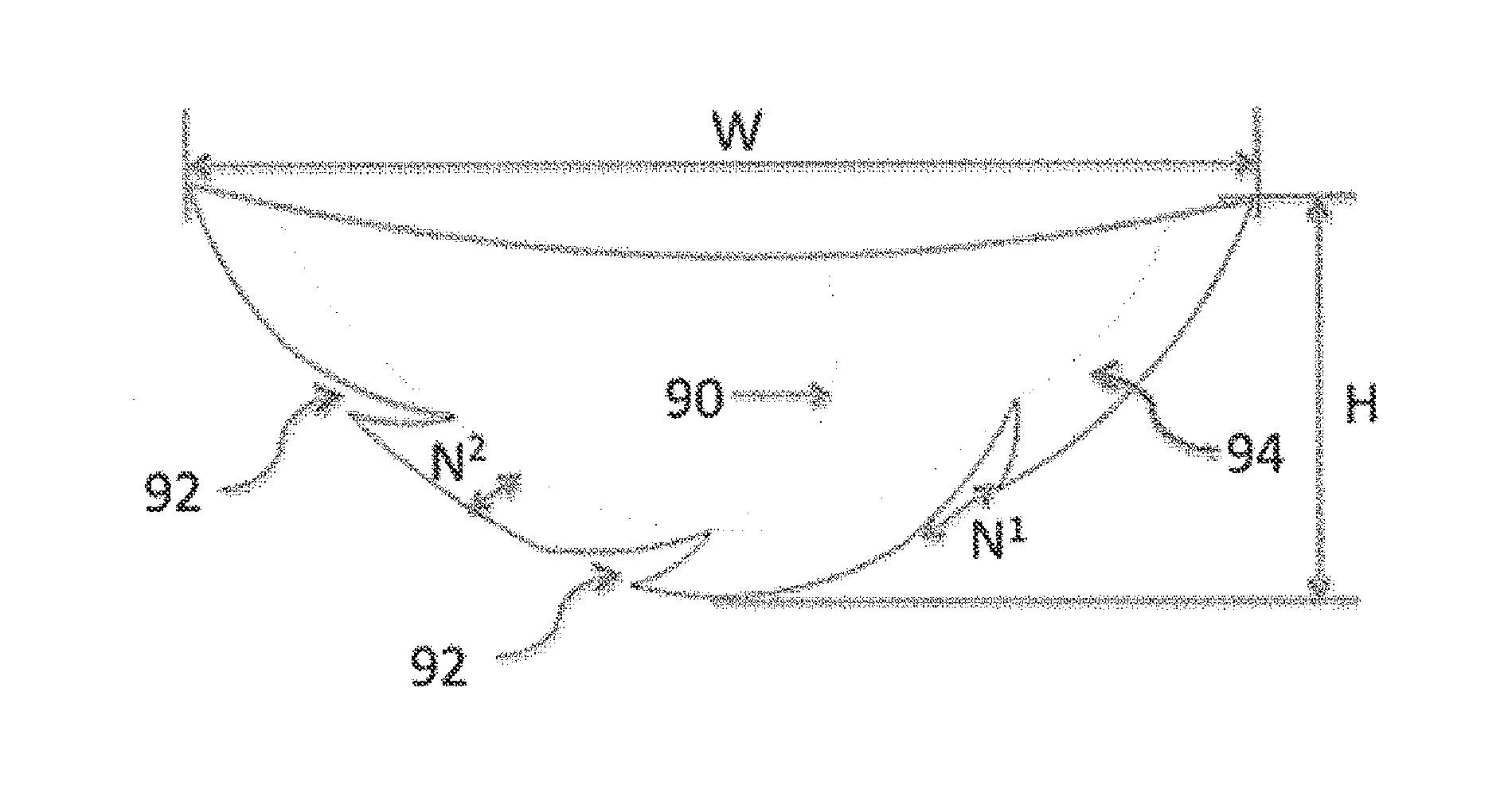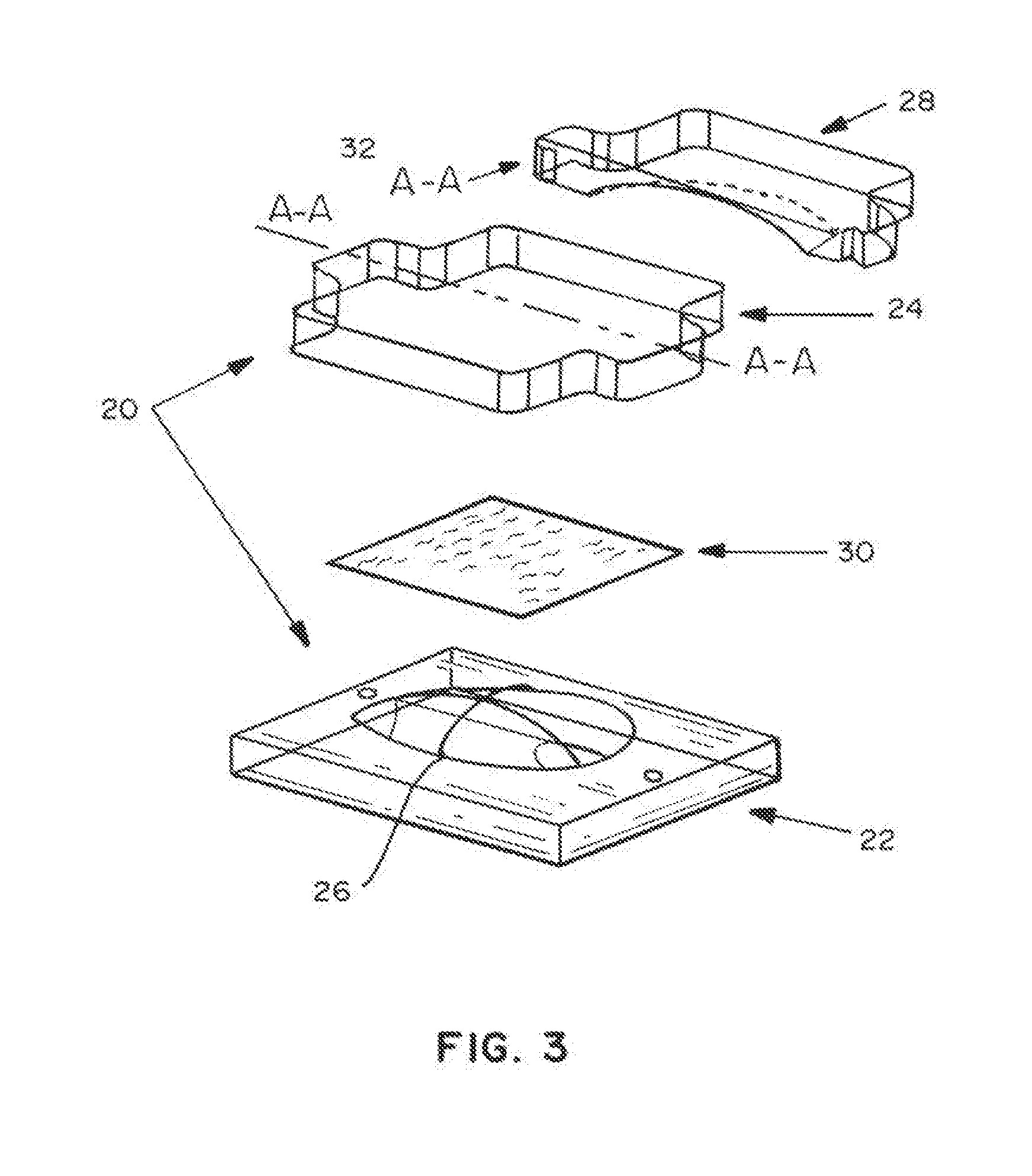Absorbable Implants for Plastic Surgery
a technology of implants and implants, applied in the field of absorbable implants, can solve the problems of recurrent ptosis, recurrent ptosis, recurrent ptosis, etc., and achieve the effect of minimizing the need to trim the implants during surgery and sufficient initial mechanical properties
- Summary
- Abstract
- Description
- Claims
- Application Information
AI Technical Summary
Benefits of technology
Problems solved by technology
Method used
Image
Examples
example 1
Regeneration of Tissue from a Bicomponent P4HB Implant
[0137]Materials and Methods
[0138]A bicomponent P4HB absorbable implant was prepared from a thin 60 μm thick extruded film of P4HB and a knitted P4HB monofilament construct with average pore diameter of approx. 500 μm and an areal density of approx. 182 g / m2. The film was bonded to the mesh by ultrasonically welding the layers together using small pieces of P4HB extrudate (approx. OD 1.5 mm, length 1.27 mm) as a binder. The welding was performed using a model 2000X Branson ultrasonic welder with a 5×5 inch horn and a flat metal anvil. The knitted construct was placed on the anvil and pieces of the extrudate were placed on the knitted material at a spacing of about 13 to 19 mm. The film was then positioned so that the pieces of extrudate were between the film and knitted materials. The horn was lowered and the layers were welded together with a burst of ultrasonic energy (weld energy 100 J, 0.5 s, amplitude 90% fixed, 0.21 MPa pres...
example 2
Regeneration of Tissue from a P4HB Implant of Thermally Bonded Fibers
[0144]Materials and Methods
[0145]A P4HB implant was prepared from thermally bonded fibers of P4HB with a thickness of approximately 1 mm, an areal density of 260 g / m2, and a weight average molecular weight relative to polystyrene of 129 kDa. The burst pressure of the P4HB implant was 0.91 MPa, and the pore size of the implant was approximately 50 μm.
[0146]Results
[0147]The P4HB implants were implanted subcutaneously in the backs of New Zealand white rabbits for 2, 4, 8, 12 and 24 weeks. The ability of the P4HB implants to regenerate host tissue with significant burst pressure was determined. The mechanical testing and molecular weight data for the explants are summarized in Table 2. In contrast to Example 1, none of the explanted samples were enzymatically digested with collagenase for mechanical testing because the thermally bonded fibers of the P4HB implant were found to degrade very rapidly. As shown in Table 2, ...
example 3
Preparation of an Asymmetric Shaped P4HB Implant
[0149]A teardrop shaped P4HB implant having the dimensions and shape shown in FIG. 1 was prepared from a knitted P4HB monofilament structure with a pore diameter of approximately 500 μm, thickness of 0.5 mm, areal density of approx. 182 g / m2, suture pullout strength of 5.6 kgf, and a burst pressure of 3.06 MPa. The implant was cut to the desired shape with scissors.
PUM
| Property | Measurement | Unit |
|---|---|---|
| length | aaaaa | aaaaa |
| width | aaaaa | aaaaa |
| height | aaaaa | aaaaa |
Abstract
Description
Claims
Application Information
 Login to View More
Login to View More - R&D
- Intellectual Property
- Life Sciences
- Materials
- Tech Scout
- Unparalleled Data Quality
- Higher Quality Content
- 60% Fewer Hallucinations
Browse by: Latest US Patents, China's latest patents, Technical Efficacy Thesaurus, Application Domain, Technology Topic, Popular Technical Reports.
© 2025 PatSnap. All rights reserved.Legal|Privacy policy|Modern Slavery Act Transparency Statement|Sitemap|About US| Contact US: help@patsnap.com



